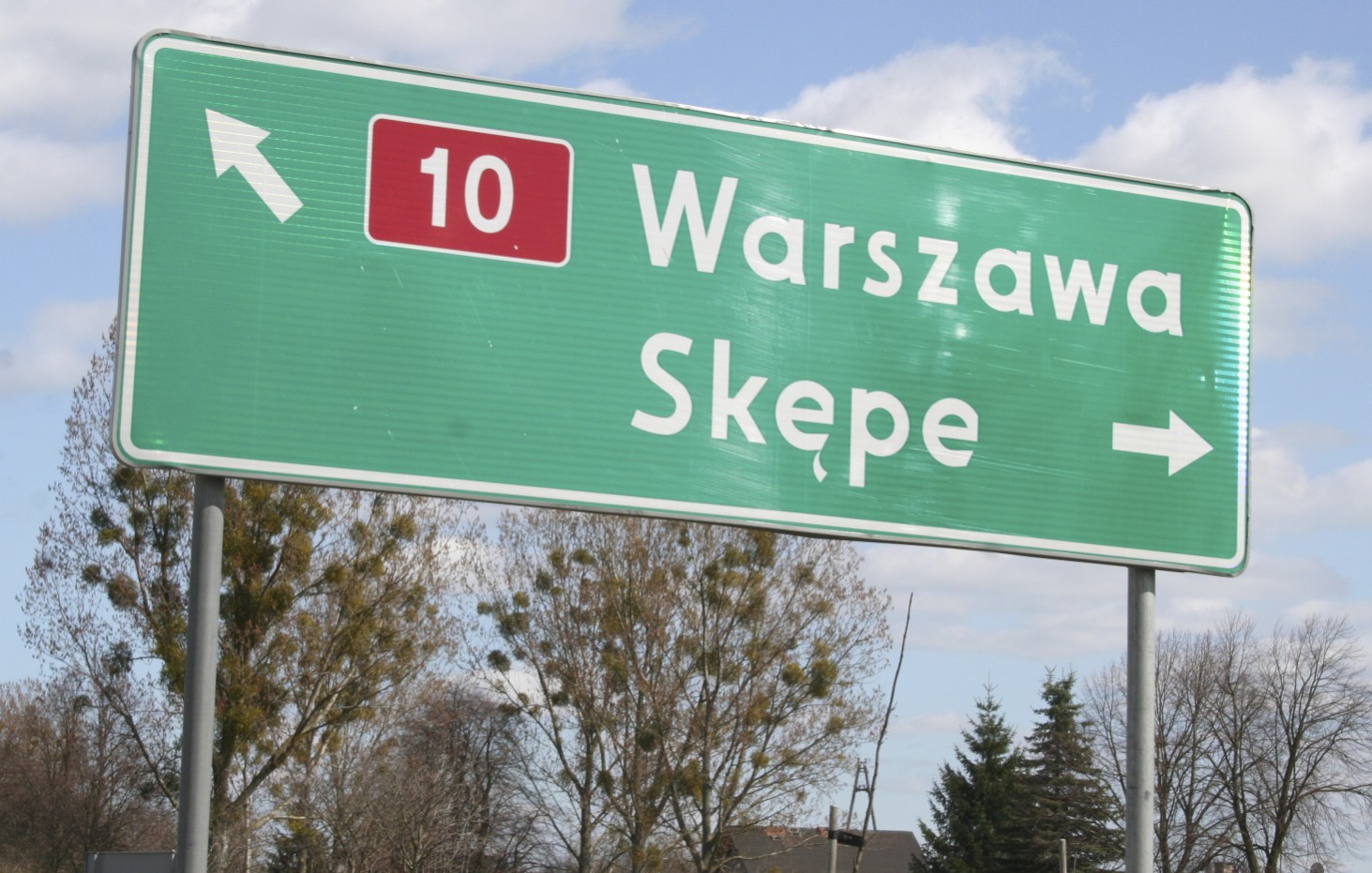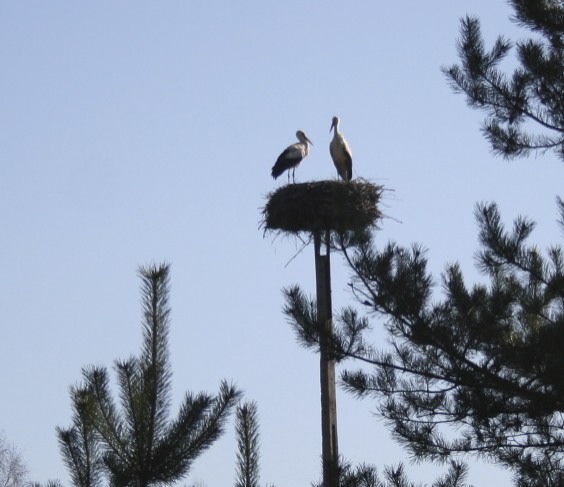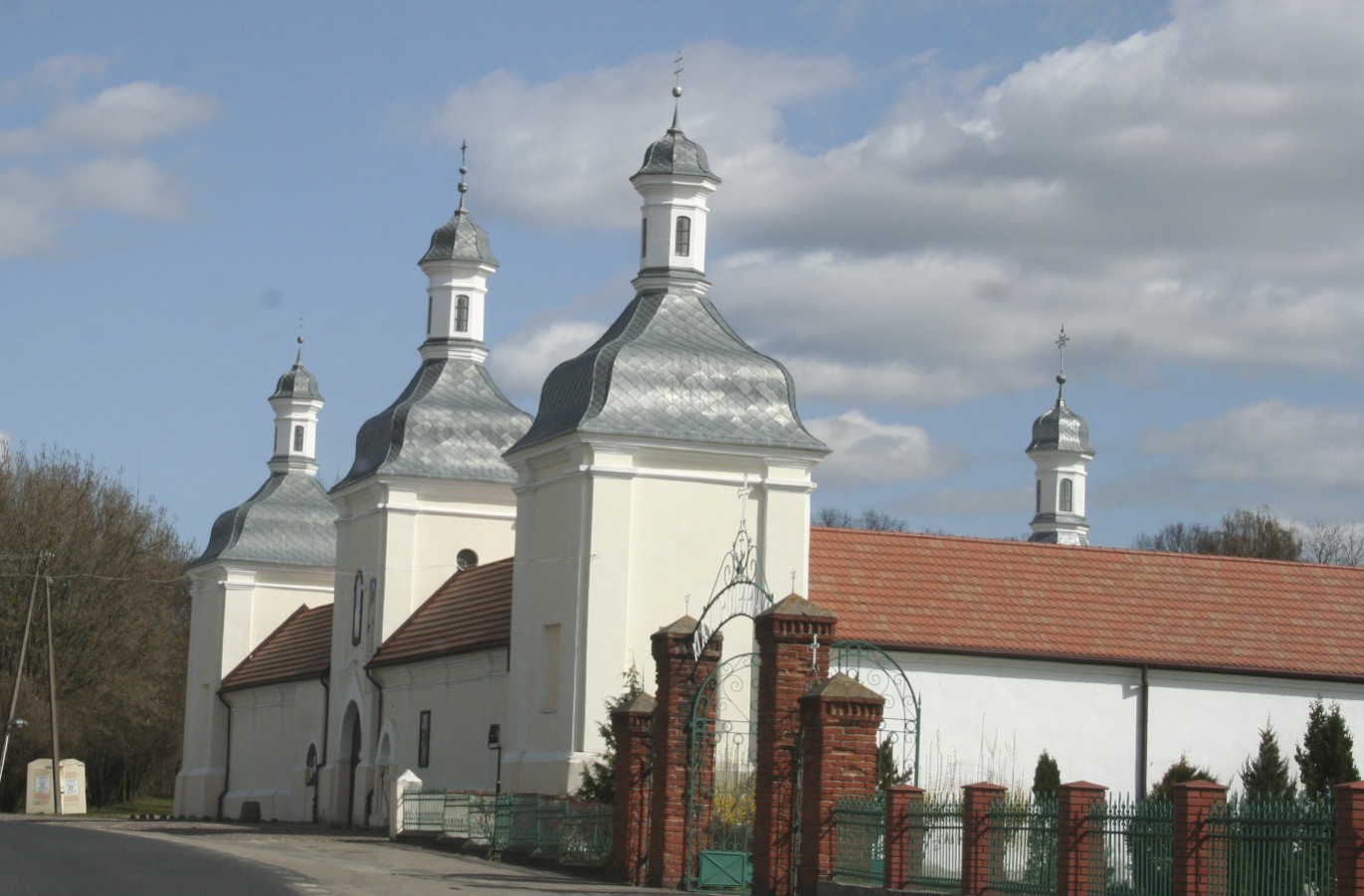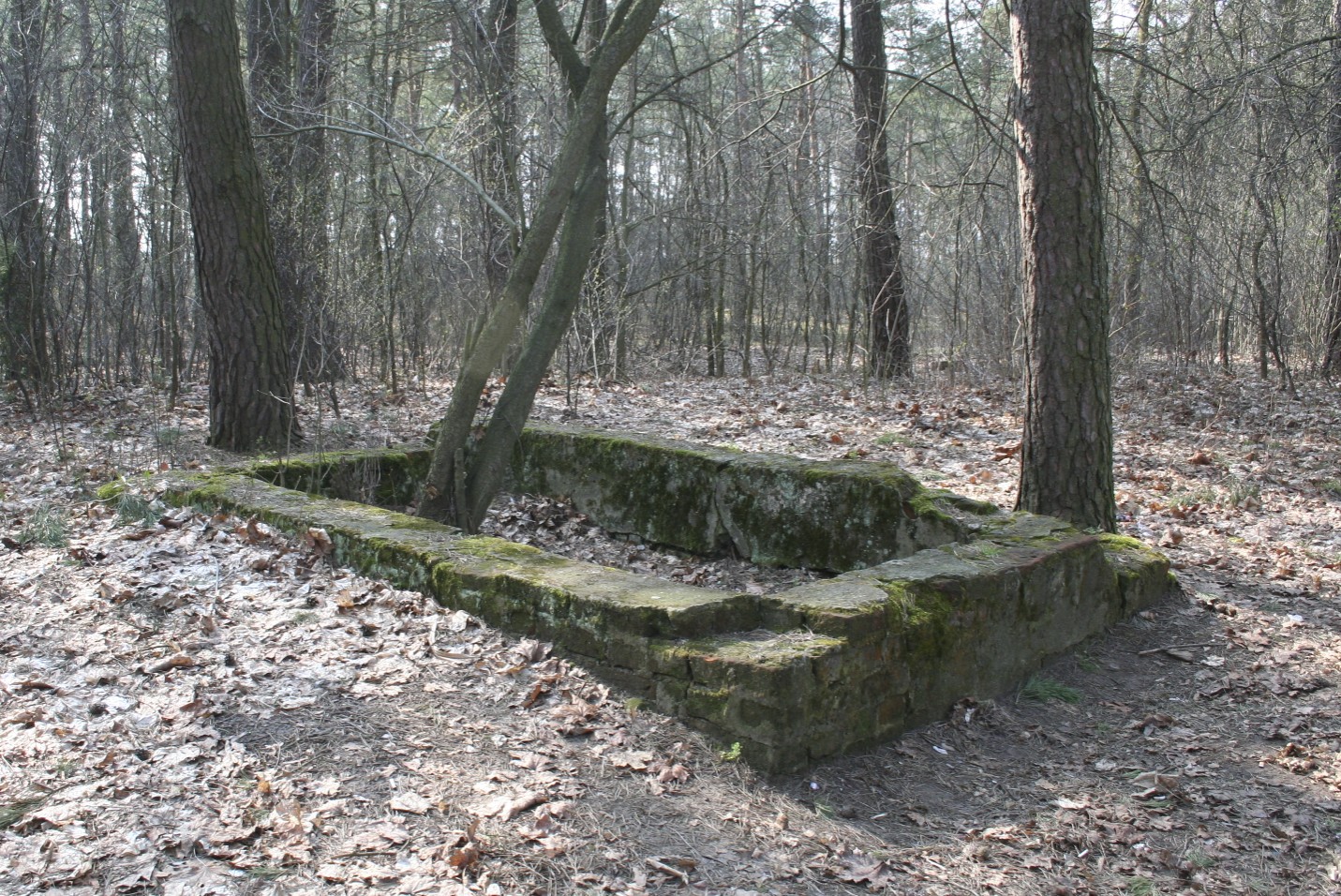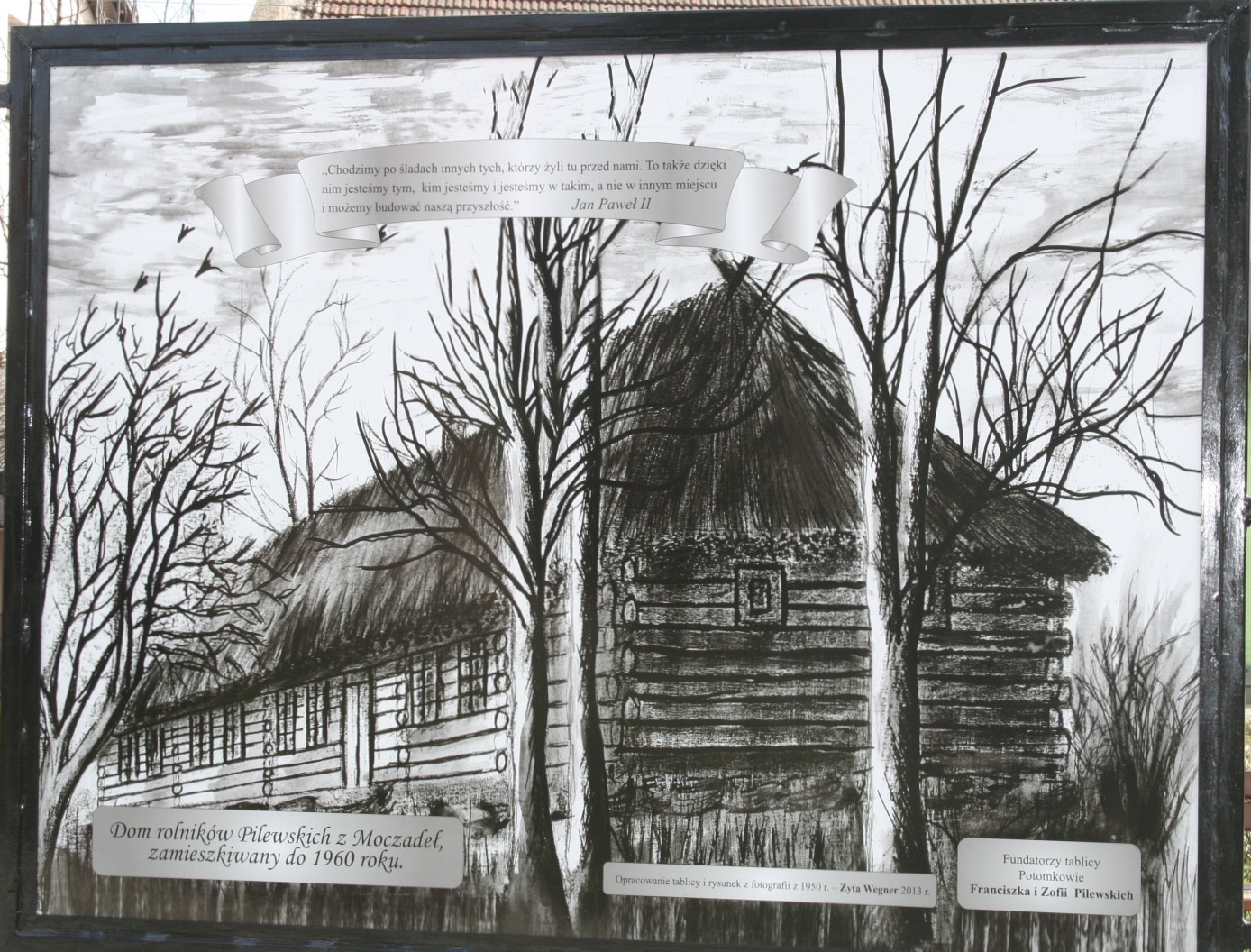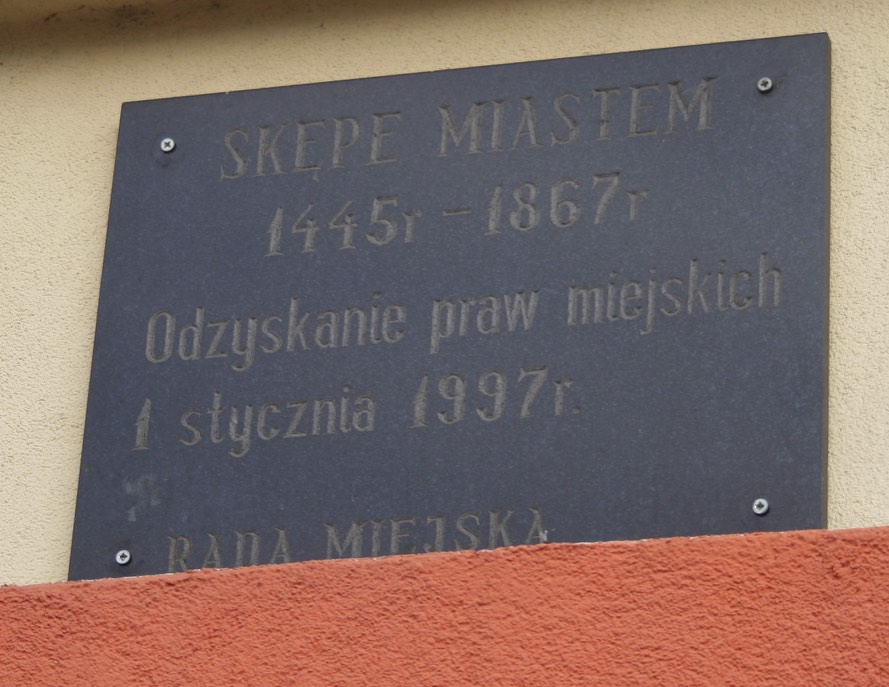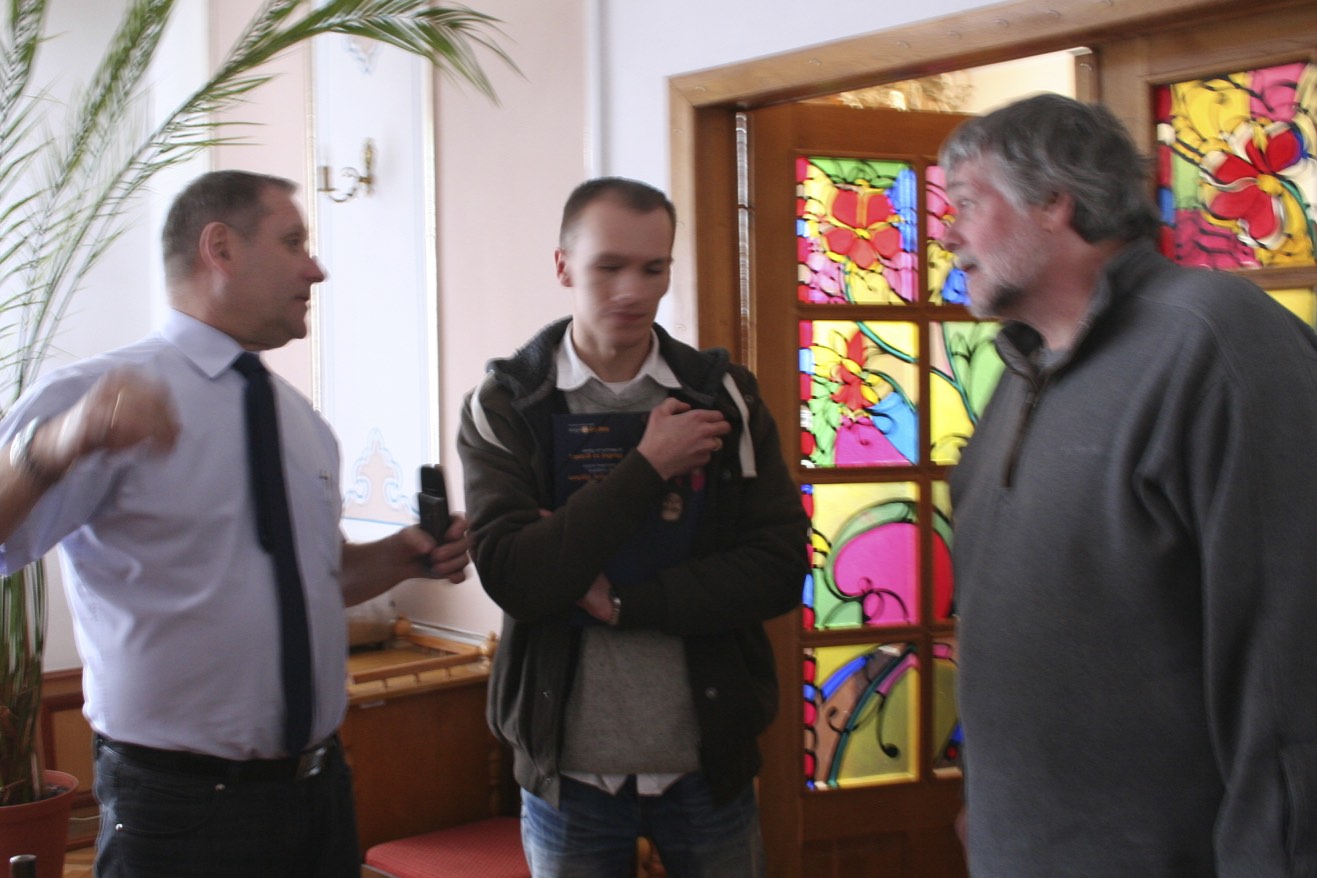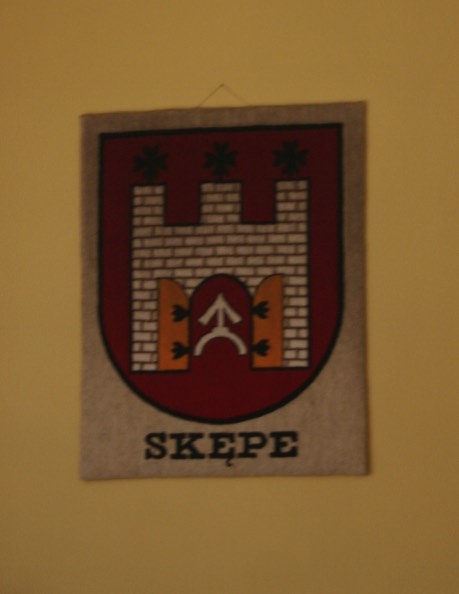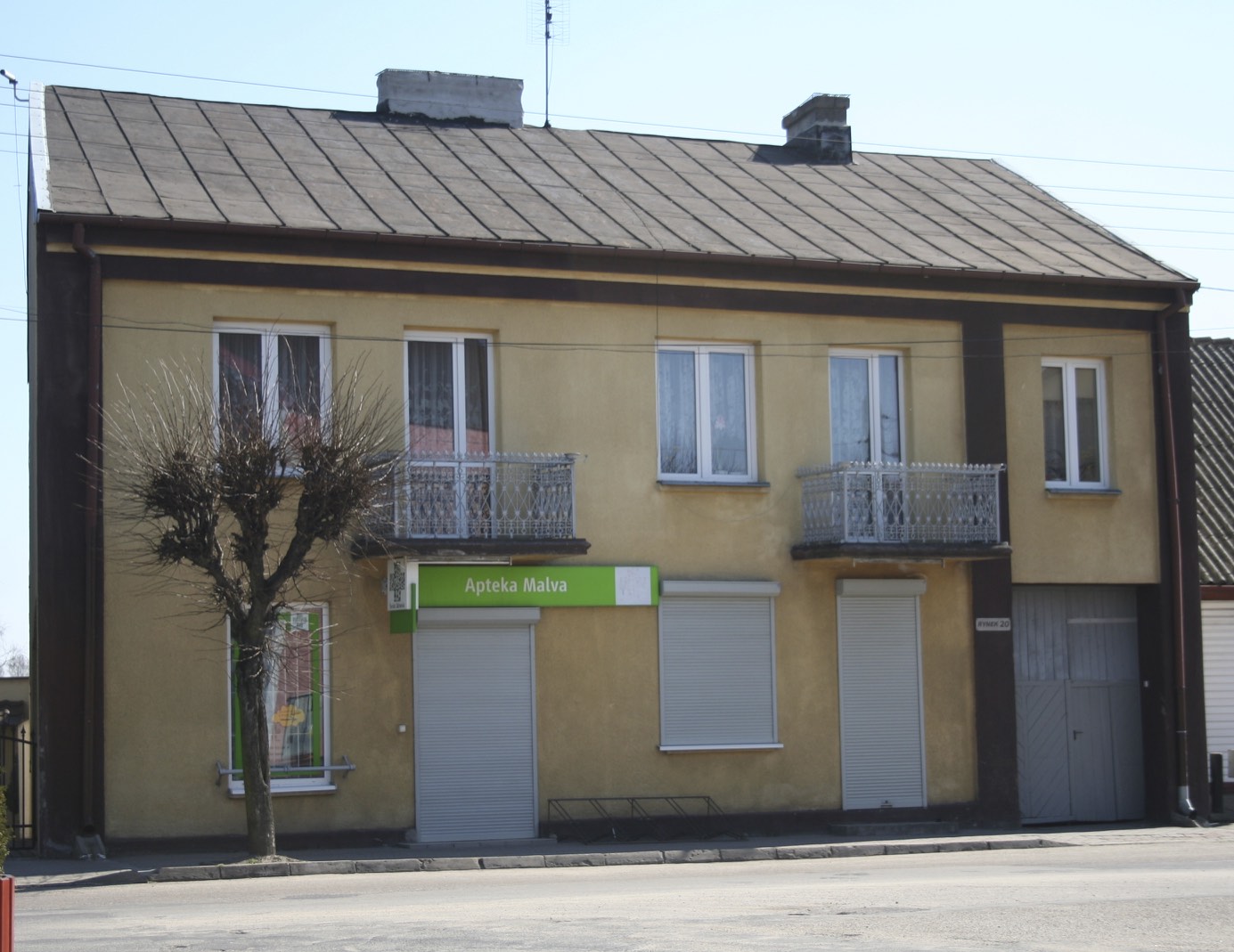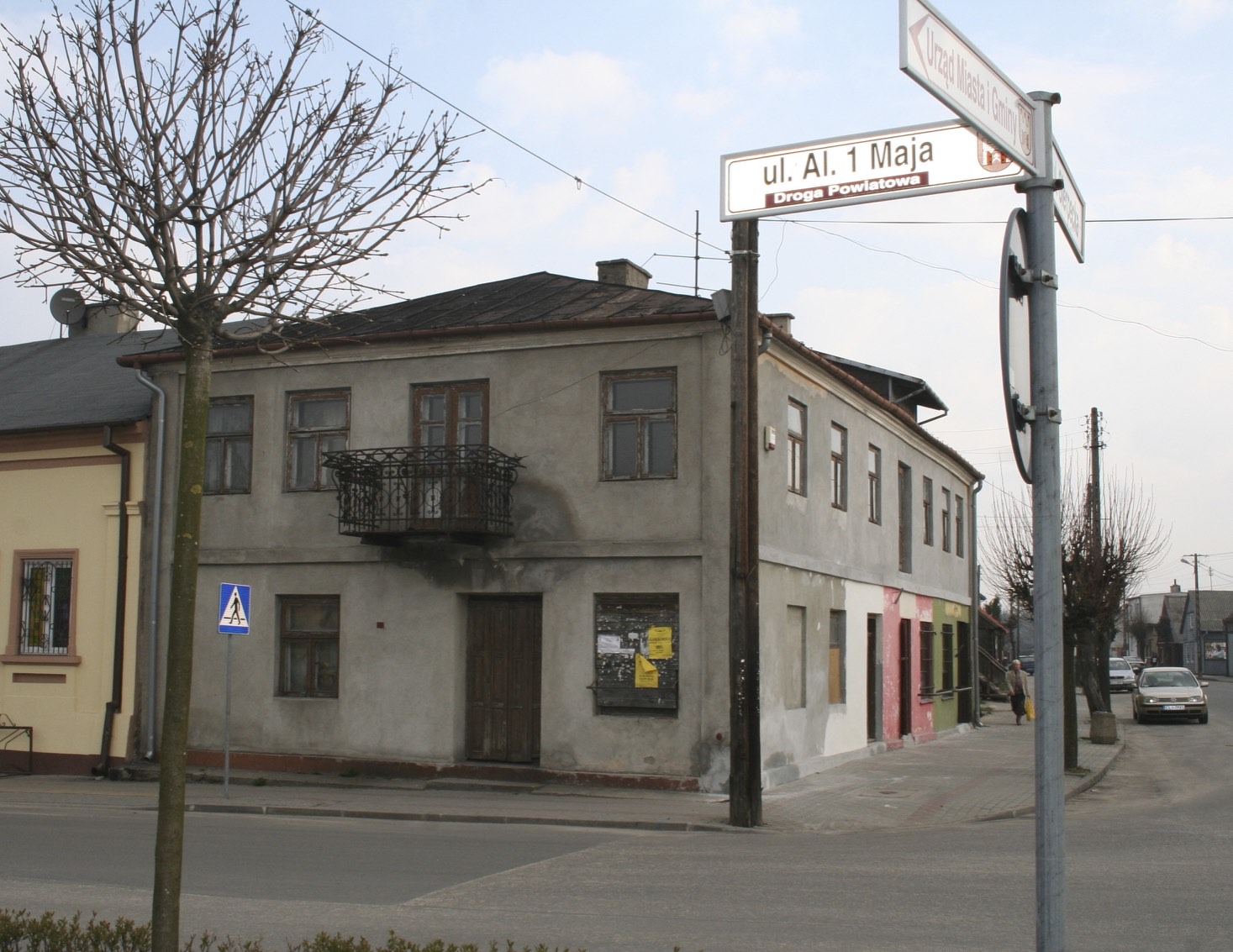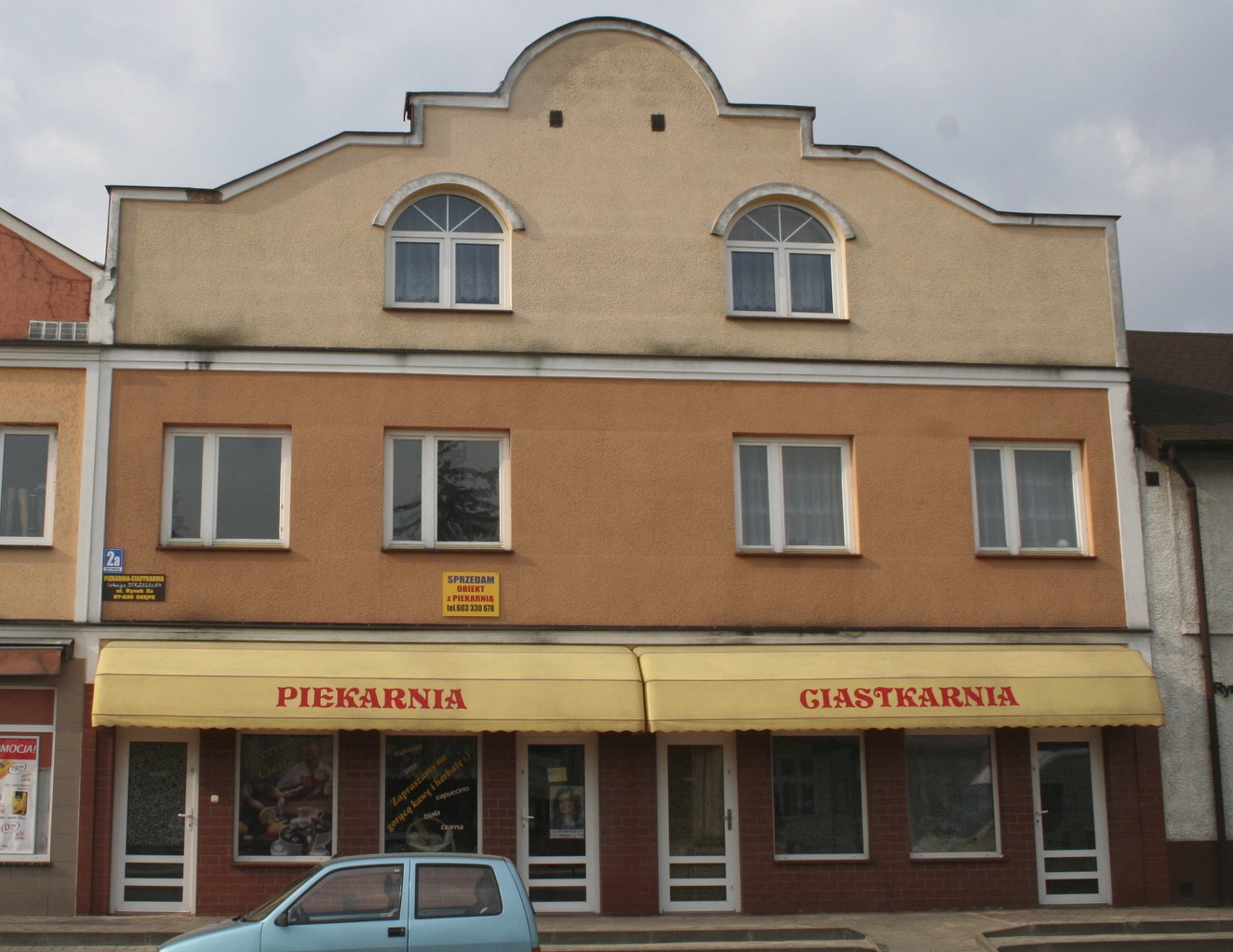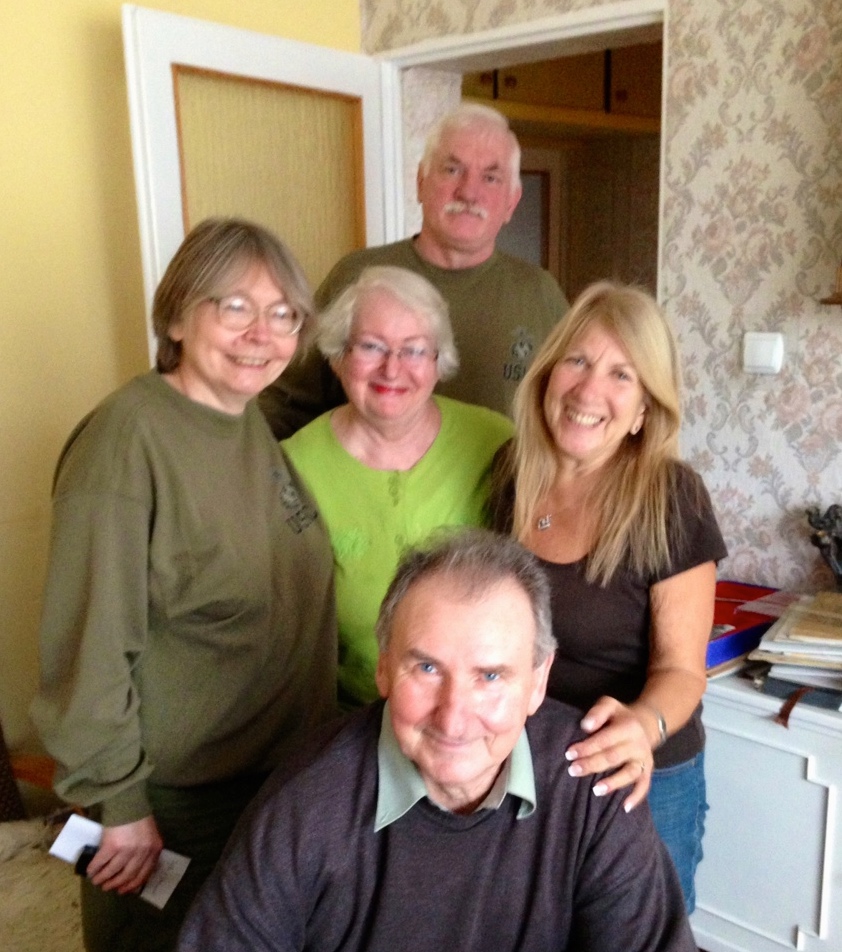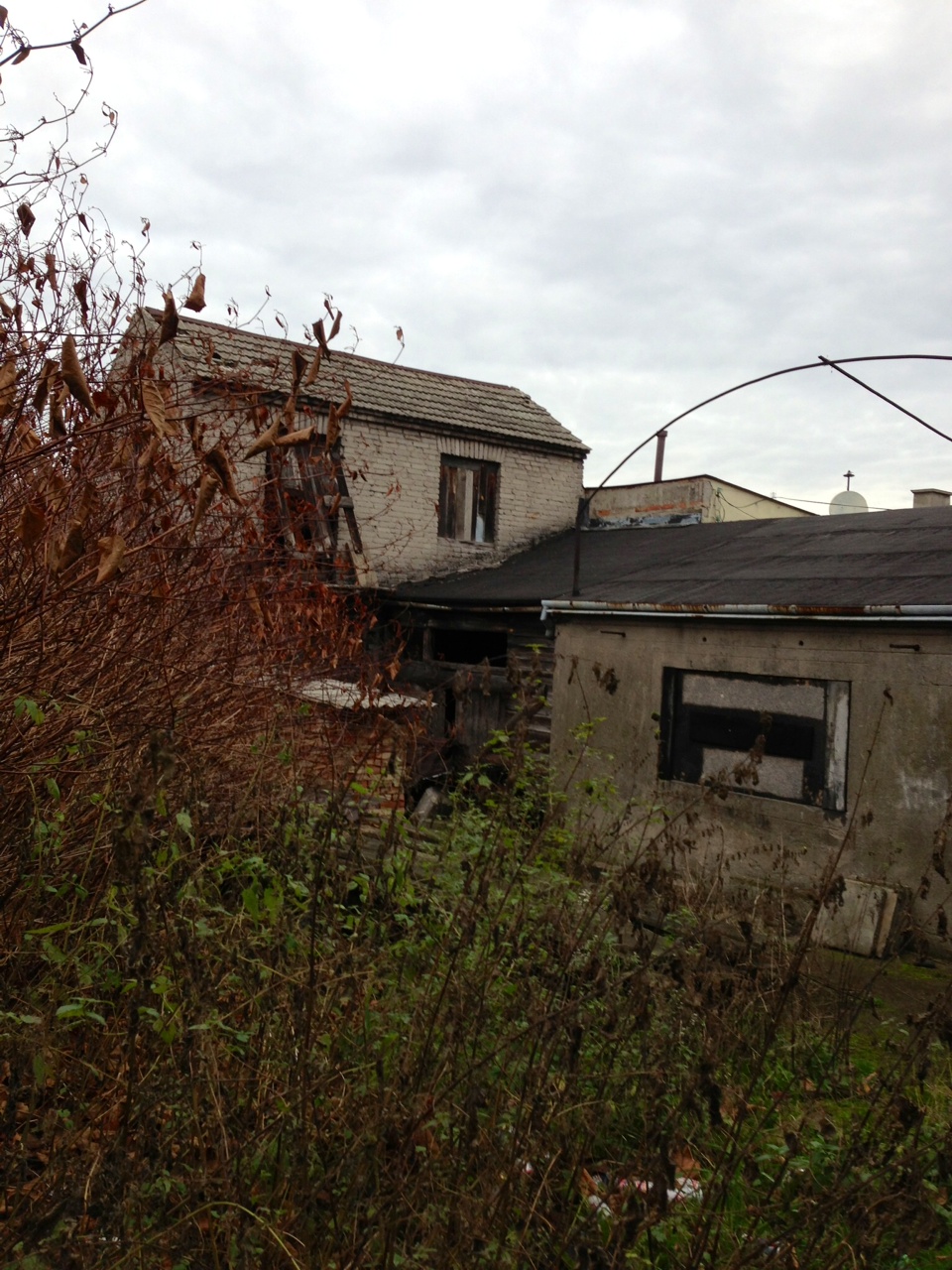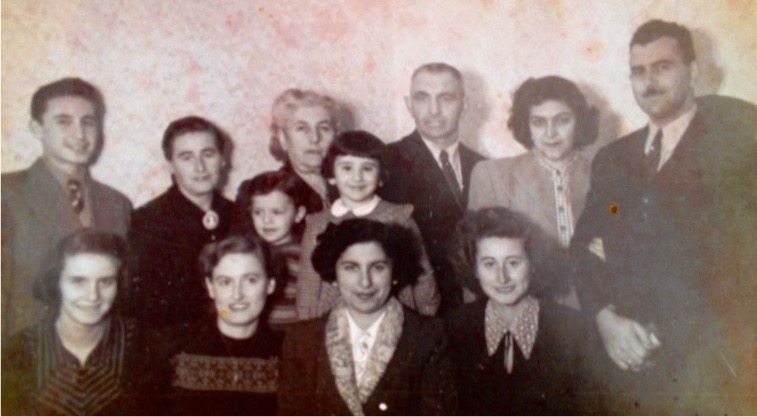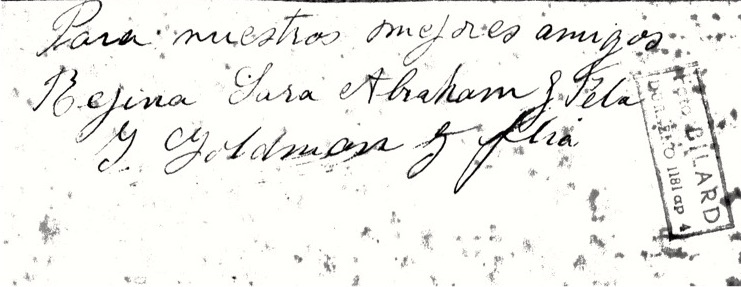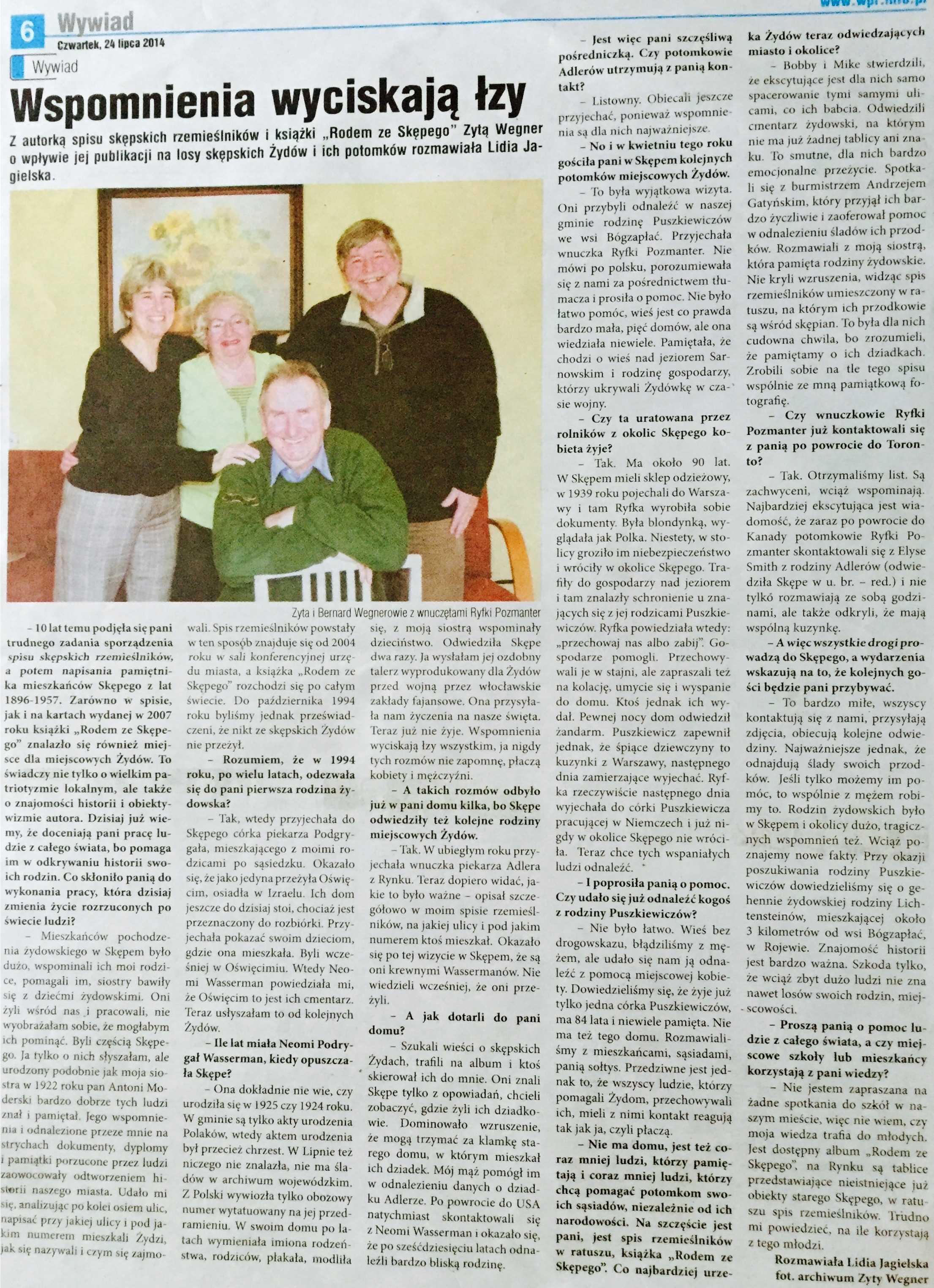Other Names: Skepe, Skempe (Russian,
German) Schemmensee (German, 1942-45)
Location: 52º52 N 19º21'
E
131 km WNW
of Warszawa
26
miles NNW of Płock
Nearby
cities: Lipno, Sierpc
|
Skępe Today A Personal Journey to Skępe Spring, 2014 Getting there:
|
||||||||||||||||||||||||
An overview: sights from a walk around town; our introduction
|
| Our visit begins: Our day proved to be
an emotional roller coaster. First we went to
the town hall which houses offices for records, the
library, and anything municipal you might want.
The library was out of frontier America. The
number of books probably would not equal those found
in most grade schools; it was tiny! It did,
however, have three computers. When asked about
material about the Jews of Skępe, the librarian
told us there was nothing on Jews. While she
doubted there was anything, she did promise to
look. That was the first indication that it
seemed like no one wanted to acknowledge the idea that
Jews had once been there… that my family was once part
of the community. It felt like someone hit me in
the stomach, leaving a sick and empty feeling.
We then tried the records. Jews. There is nothing here. Knowing the names are not enough. They are not kept alphabetically. If we know the exact day, month and year, then maybe they can help us. But an interesting thing happened. It is here that Mike gave Żaneta the moniker, Steamroller. As we went to each door she asked Sławek and us to wait outside. She would go in and even when she returned empty handed she had a look of determination that she was not going to give up. It finally ended when we re-visited the library, and the librarian (no doubt not wanting to disappoint Żaneta) found two pages in a book. Looking at the book, the first name that jumped out at us was Avraham Cudkiewicz! Then the picture of the Rabbi. Then Gutman (my relatives) and Goldman... and other names that we recognized from our research for the Kehilalinks. Żaneta wanted a copy made for us, asked for the address of the author of book, and our day (AND ENTIRE TRIP CHANGED). We walked over to the home of the author, Zyta Wegner. She is known as the unofficial historian of the Jews of Skępe. She and her husband Bernard were very excited to meet us and had a warm welcome complete with homemade cookies and a nice hot cup of tea! Zyta was born and raised in Skępe and still lives at 3 Sierpecka. She remembered when Naomi Podrygal returned to Skępe after the war. She was one of the lucky ones to have survived Auschwitz and came to her mother's house. Naomi was their next door neighbor and could not believe her parents and 9 siblings were all murdered. That experience transformed Zyta's interest and appreciation for her family's Jewish neighbors which continues even today. We cried as she recounted the story. 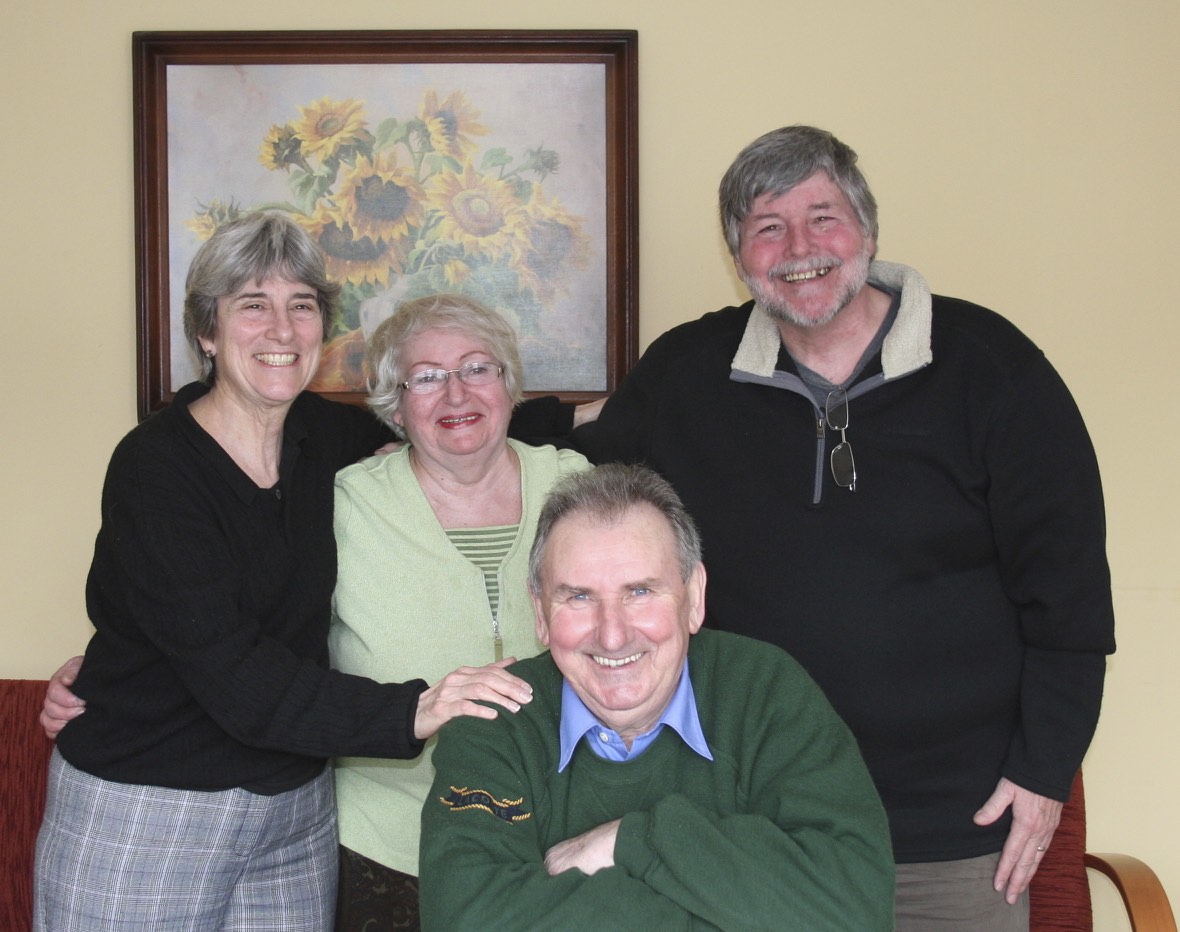 As it turns out, Zyta has a
sister, who at 91 years of age, living in Bydgoszcz,
with a memory like a steel trap, knew many members of
our family. Within 15 minutes of our visit we
were on the phone with her. We all agreed to be
in touch again! As it turns out, Zyta has a
sister, who at 91 years of age, living in Bydgoszcz,
with a memory like a steel trap, knew many members of
our family. Within 15 minutes of our visit we
were on the phone with her. We all agreed to be
in touch again! We were representatives of the 5th family to visit the Wegners over the years. Bernard whole- heartedly supports his wife's efforts. In fact, they shared some instances where he also worked on behalf of the former Jewish neighbors. As we sat sharing stories, he shocked us all when we asked about a farmer named Pruskiewicz from a very small nearby village named Bogzaplac. My cousin Faye had described how this farmer had saved her and her mother's life late in the war. Faye could only remember that his name sounded like Puskewicz. Mike promised he would try to hunt any records down about this man. (He had been unsuccessful until we were getting ready to come to Poland.) One day looking over a zoomed-in version of a map of Skępe, he noticed a builder in town by the name of Pruskiewicz. It was so close that he felt it was more than a coincidence and when we talked to our translator about jobs we wanted him to do, calling this Pruskiewicz was one of them. So when the name Pruskiewicz was mentioned and we started to tell the story Faye shared, Bernard took over and told the same story as Faye and more!! Who would have believed it! We all agreed to meet again the next day at the Wegner home for a last visit in my grandmother’s town. Pan Wegner, knowing that we would never be able to find the Jewish Cemetery, led us to the site. He was right. Even if we were somehow able to navigate to the location, there would have been no way to even know we were there. It was a heartbreaking visit. While the cemetery was destroyed during the war, and the headstones were taken by Skępe Poles, there was nothing to indicate that there was once a cemetery on this ground. In fact, Sławek told us that young Poles had no idea and used the area for camping. How could they have known? There was not a sign, a stone, a twig or rock to even indicate that this was once sanctified space. That this was the place that my great grandparents, my aunts and uncles and my cousins are buried. The only remnant left of what was once 7 acres of the Jewish Cemetery was the foundation for a very small building. We have since learned that this was an ohel for the burial of an important person, as the rabbi. We said Kaddish, placed 4 stones - 2 from each of us, a stone from all members of the Zamoskiewicz and Gutman families - for all the relatives buried in the unmarked graves on these two ridges of a hill.
|
Back to top
Following our visit
to Skępe....
|

Compiled by Roberta Fleishman and Mike Smith
roberta.fleishman@gmail.com
Copyright © 2013 Roberta Ann Fleishman
roberta.fleishman@gmail.com
Copyright © 2013 Roberta Ann Fleishman
This site is hosted at no cost by JewishGen, Inc., The home of Jewish Genealogy. If you have been aided in your research by this site and wish to further our mission of preserving our history for future generations, your JewishGen-erosity is greatly appreciated.
